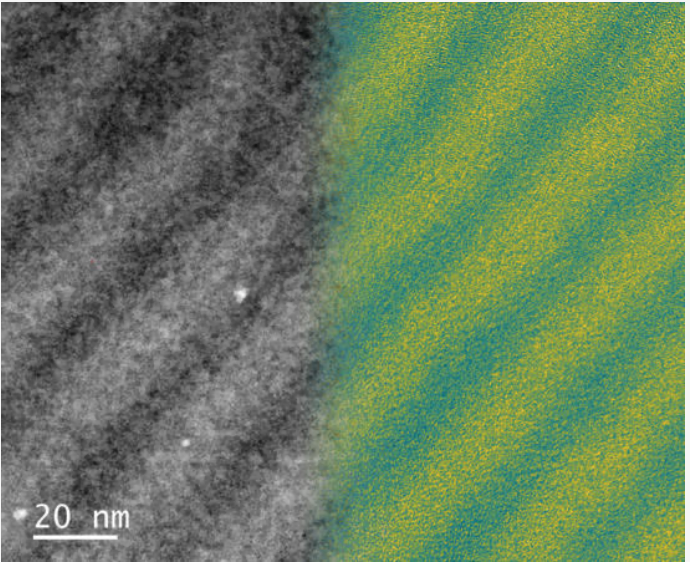The investigation of the morphology of block copolymer domains is of great importance as it directly determines the precision of replicated nanostructures. Commonly used analytical techniques (neutron scattering, scanning force microscopy) either lack spatial information or nanoscale resolution. Using advanced analytical (scanning) transmission electron microscopy ((S)TEM), we provide real space information on polymer domain morphology and interfaces between polystyrene (PS) and polymethylmethacrylate (PMMA) in cylinder- and lamellae-forming BCPs at highest resolution. This allows us to correlate the internal structure of polymer domains with line edge roughnesses, interface widths and domain sizes. STEM is employed for high-resolution imaging, electron energy loss spectroscopy and energy filtered TEM (EFTEM) spectroscopic imaging for material identification and EFTEM thickness mapping for visualisation of material densities at defects. The volume fraction of non-phase separated polymer species can be analysed by EFTEM. These methods give new insights into the morphology of polymer domains the exact knowledge of which will allow to improve pattern quality for nanolithography.

Find all detailed information in this paper!